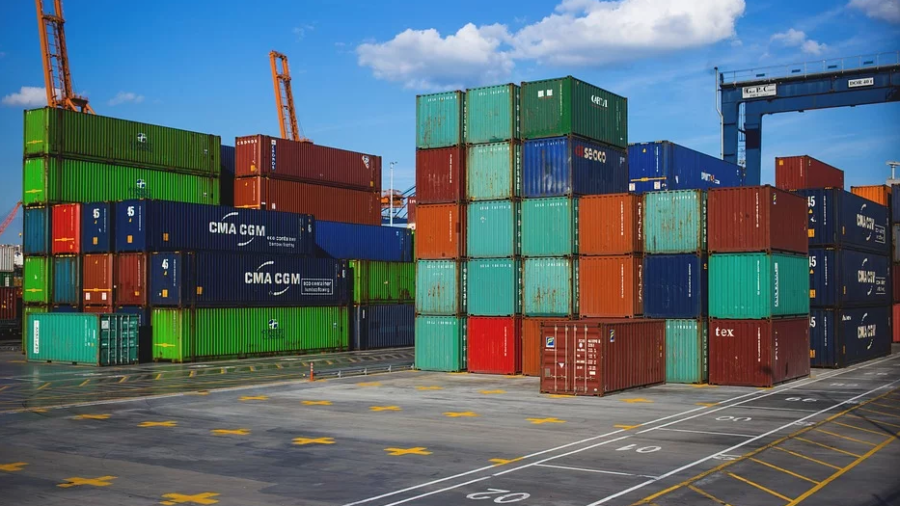
As we approach another holiday season with the pandemic, hopefully we can look forward to greater social mobility. Last year we were contending with lockdowns but concerns over shortages were largely isolated to toilet paper, paper towels and cleaning supplies. What a difference another year makes. Surging consumer demand has overwhelmed a system focused on relentless efficiency and just-in-time delivery. It started with people at home shifting their consumption from restaurants, travel and entertainment to purchasing items for their homes. Christmas shoppers are now facing unanticipated shortages, longer shipping times and expected supply-chain disruption.
Across the world, producers and logistics companies are scrambling over a shortage of shipping containers. During the initial shutdowns, many factories closed temporarily causing large numbers of containers to be stuck in ports. To mitigate rising costs and erosion of ocean freight rates, carriers reduced the number of vessels at sea. Massive workforce reductions affected the ports and cargo deports across North America. And without adequate staffing to process cargo supply, containers started to pile up. There are about 180 million containers worldwide but they’re in the wrong places.
Record Consumer Demand
Our continent generates a significant trade in-balance. It means that for every 100 containers that arrive to our ports, only 40 are sent back with exported goods and 60 containers continue to accumulate. It represents a staggering amount considering the China to US trade route supports an average of 900,000 TEUs (20 foot equivalent units) every month. That’s during a normal years and current shipping volumes are at record highs. In the first seven months of 2021, cargo volumes between Asia and North America were 27% higher than pre-pandemic levels, according Bimco, a ship owners’ association.
Maersk, the world’s biggest container shipping firm, indicates the average door-to-door shipping time for ocean freight advanced from 41 days a year ago to 70 days now. For loaded containers that are sent inland, traffic on rail networks, a shortage of truck chassis, drivers and warehouse workers has lead to major backups at cargo facilities as companies struggle to unpack the containers and get them back into circulation. Many ships, already behind schedule with congestion at ports decided to leave their empty containers, which continued to pile up at major import centers and supplies dwindled at major export hubs.
Logistics companies scrambling over a shortage of containers has naturally resulted in a double-digit increases in shipping costs. Drewry Consultants’ shipping index measures the cost of containers is up 291% as compared with a year ago and is at its highest level in four years. The typical pre-pandemic price of transporting a 20-foot container carrying over 20 tons of cargo from Asia to NA was about the same cost as an economy ticket for the same trip. The average shipping cost for a standard TEU is over four times higher than it was a year ago. The spot price in 2019 was around $ 2,500 and now closer to $ 20,000. Exacerbating the issue is the massive differential in shipping rates to and from the Asian continent. Alphaliner reports carriers receive $0.66/nautical mile on the Shanghai to LA route and less than 10 cents on the return trip.
When It Gets Better
In the summer of 2021, North American spending on physical stuff was 7% higher than pre-pandemic levels. The magnitude of accelerating consumer demand has all major shipping lines needing to add significant capacity to address container shortages. Many carriers committed to working through the cargo backlog are postponing new bookings until mid-January. Some freight lines are refusing to pick up NA cargo because they want containers back to Asia as quickly as possible to take advantage of historically high shipping rates. Three out of four containers from North America to Asia are going back empty.
Drewry Shipping Consultants estimated that 2.8 million 20-foot equivalent units were produced in 2019. Orders for shipping containers had been falling amid economic uncertainty and slowing global trade. This year they are predicting a 67% year-over-year increase. Container factories largely concentrated in China are expected to fabricate a record 5.4 million TEUs this year. As this increased production infiltrates the shipping industry and demand moderates as people resume service-based consumption, the situation should improve. Capacity is expected to improve in late 2022, although with higher prices.
Sources for this article
https://www.economist.com/finance-and-economics/a-perfect-storm-for-container-shipping/21804500
https://www.weforum.org/agenda/2021/10/global-shortagof-shipping-containers/
https://www.strategy-business.com/blog/Rethinking-spare-capacity
https://www.washingtonpost.com/business/2021/11/18/shipping-container-shortage-retail/
Photo Credit: iStock
Tags: Aftermarket parts shortages, costly truck repairs, family-run business value, good business value, Heavy-duty parts shortages, higher prices for heavy duty parts, supply chain disruption, truck and trailer parts burlington, truck and trailer parts milton, truck and trailer parts oakville, truck and trailer safety, truck and trailer service burlington, truck and trailer service milton, truck and trailer service oakville, TruckPro Aftermarket parts

It helped when you mentioned that a shortage of shipping containers impacts producers and logistics companies. My friend needs a shipping container for their products. I should advise him to turn to a leading provider of quality container sales.